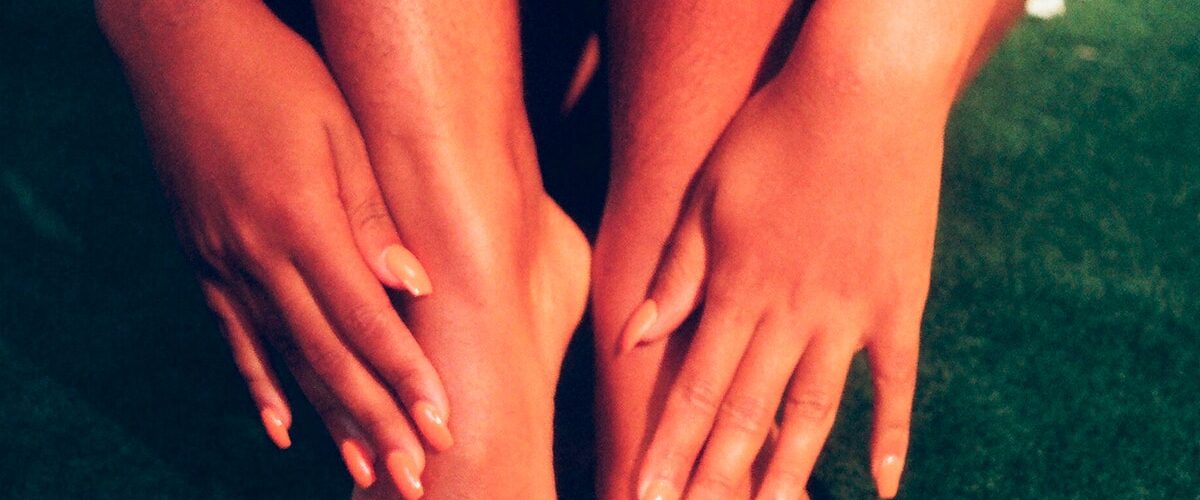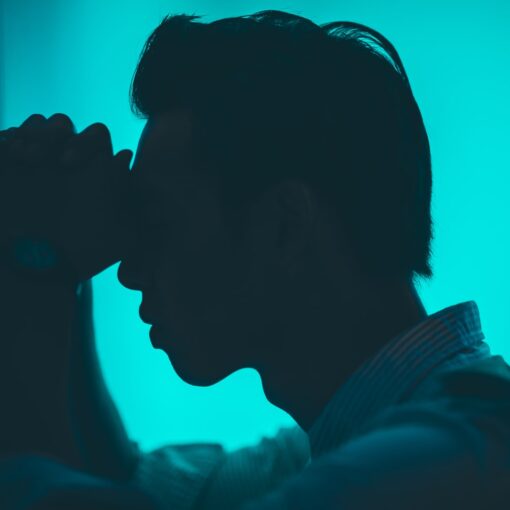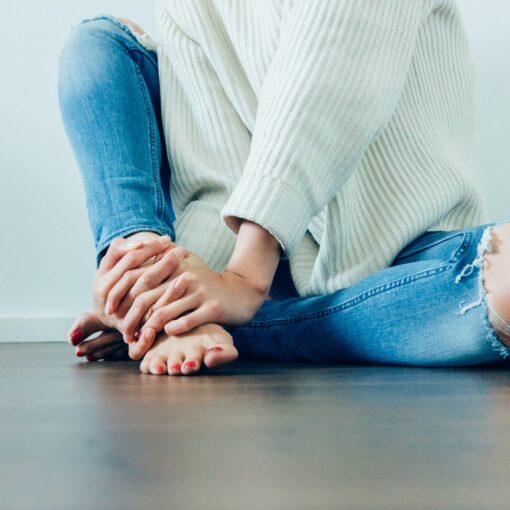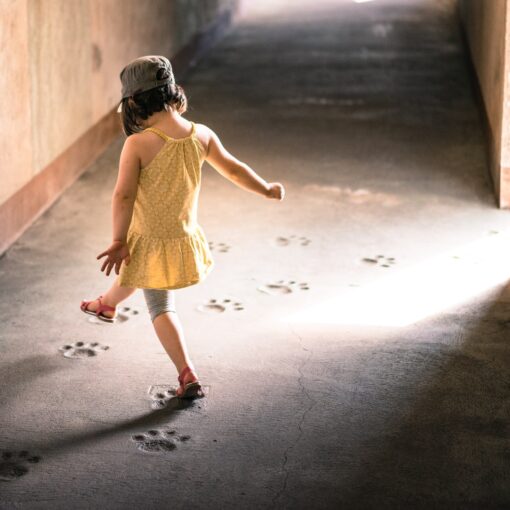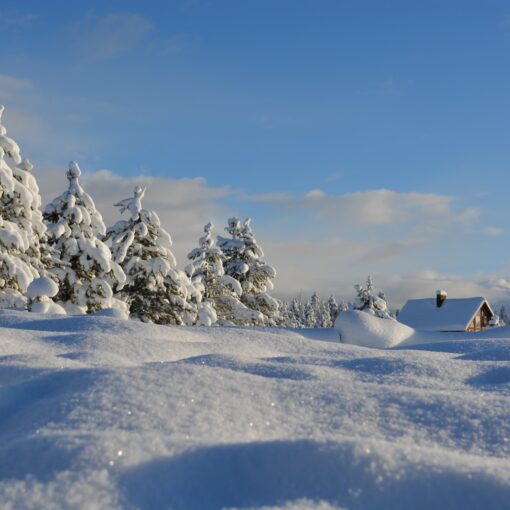Please Note: This post may contain affiliate links. If you click one of them, we may receive a commission at no extra cost to you. As an Amazon Associate, I earn from qualifying purchases.
Page Menu
Chilblains or pernio is a condition in which the circulation to the body's extremities is impaired, typically affecting the hands and feet. This is due to an insufficiency of blood flow and can be caused by external factors such as cold temperatures and wind. Chilblains often causes painful skin that may turn red or purple and can also result in ulcers on the affected areas.
Key Concepts and Top Takeaways
– Recognize chilblains symptoms: redness, itching, and swelling.
– Avoid extreme cold exposure to prevent chilblains.
– Wear warm, layered clothing during cold weather.
– Keep feet dry and change wet socks promptly.
– Gradually warm up cold extremities to avoid shock.
– Use topical creams to soothe irritated skin.
– Consult a doctor if symptoms persist or worsen.
– Manage underlying conditions like poor circulation.
– Consider dietary changes to improve blood flow.
– Stay active to enhance overall circulation and warmth.
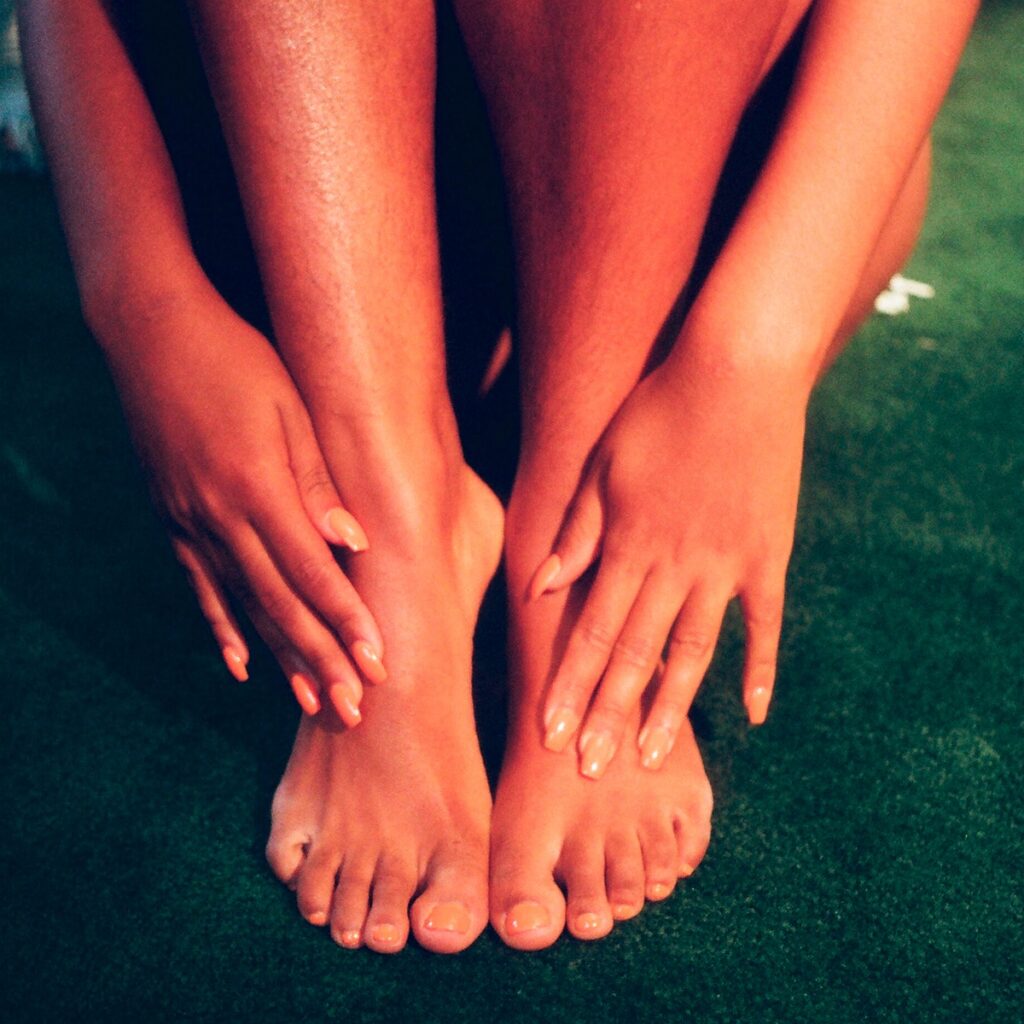
Chilblains are a frequent complication of cold weather and occur more often in individuals with poor circulation. They can be triggered by deep frostbite, freezing rain, and wind. Symptoms of chilblains include redness and swelling on the affected area; sometimes accompanied by pain, itchiness, and blistering. Complications may arise due to infection or allergy to certain treatments.
Chilblains may also be the result of changes in temperature or humidity. Complications can include fluid buildup in the tissues around the joint and spreading inflammation. Treatments for chilblains include antihistamines to relieve itching and injectable steroids to reduce pain and swelling.
Chilblains are intense, localized, inflammatory reactions of the skin caused by exposure to cold temperatures. They start with a red, itchy bump on the skin and worsen to blisters and cracks in extreme cases. With adequate medical treatment, chilblains can be quickly relieved.
The most common triggers for chilblains are wet feet or cold hands.
A common misconception is that chilblains are only a result of frostbite. Chilblains are actually the result of an allergic reaction to cold, which can happen in people who have Raynaud's Syndrome or who are predisposed to the condition. Even though the symptoms may be similar, frostbite needs to be treated differently.
Don't think you are safe from cold weather just because it is January. Chilblains are a type of inflammation that occurs when the small blood vessels in your skin get damaged, usually by prolonged exposure to cold. These painful blisters can develop on various parts of the body, including the feet, hands, ears, or nose.
Symptoms of Chilblains
Chilblains are a type of irritation that usually occur during winter. These symptoms typically last just a few weeks but can last for months if they're not treated. It's important to see a doctor as soon as possible to learn more about prevention and treatment. A person will be diagnosed with chilblains if they have been experiencing symptoms such as redness, swelling, pain, itching, or fever for over one week.
Chilblains are one of the most prevalent problems related to the cold. They can also be caused by different medical conditions that interfere with the body's blood circulation. Symptoms include pain, redness, or swelling on the hands, feet, or nose. Proper prevention includes wearing warm clothing and avoiding overexposure to cold air.
Chilblains can be painful and uncomfortable and may lead to complications such as infections. Treatment for chilblains includes wearing warm clothing and avoiding exposure to cold sources.
The condition is characterized by a redness to the skin, which typically starts at the toes and spreads upwards. There are no other symptoms, but it should be treated quickly because if left untreated it becomes worse and can lead to other issues.
Chilblains are a cold-related skin condition that typically occurs in people with circulatory problems such as Raynaud's syndrome. They present as red, itchy bumps on the skin that usually occur on the fingers, toes, and nose. Chilblains usually only last a few weeks and will disappear after the skin thaws.
Affected areas of the body may experience redness, swelling, itching, and blistering. Chilblains are caused by exposure to cold temperatures or exposure to low atmospheric pressure. The swelling that occurs as a symptom of chilblains typically begins 2-3 days after exposure to these elements and often resolves within one week.
The condition is characterized by inflammation in the small blood vessels located around the skin surface. The word “chilblain” comes from Old Norse words meaning “to be chilly”, which is true because chilblains are caused by cold temperatures.
Icy, biting winds and snow can be unforgiving to those residing in the northeast. The cold weather can cause your body to experience chilblains, which is a disease that's characterized by painful swelling and blistering on the feet and hands. Chilblains typically affects people who have peripheral vascular disease or diabetes because their blood flow slows down, and they don't regulate their body temperature well.
Chilblains are an uncomfortable condition that is often not well-known to the general population. They are caused by exposure to cold temperatures, causing inflammation of blood vessels. The result is often itching and irritation on the body, including around the fingernails and toes, as well as redness and swelling associated with chilblains. Sometimes, these symptoms can be accompanied by blisters or ulcers on the skin.
Chilblains are a condition characterized by inflamed, broken blood vessels in the skin of the extremities. These purple, red, or bright-red patches can be painful and itchy as a result of the inflammation. They are most common during winter months and often show up on toes or fingers that have been exposed to extreme cold for a prolonged period of time.
Causes of Chilblains
Chilblains are a common disorder caused by exposure to extreme cold temperatures. Symptoms include small, red, itchy swellings on the skin, usually on the hands and feet. This condition generally resolves within a few days without any need for treatment, but in some cases, it may require medical attention.
Chilblains are an inflammatory reaction to the cold that occur when your skin is exposed to cold temperatures. Chilblains are most often found on the hands, feet, and face. The name derives from the French word “chaud” meaning “warm” and “blain” meaning “bluish-red swollen area of the skin.” Chilblains can be caused by cool drafts or exposure to cold outdoor winter weather.
Chilblains are a common occurrence for those living in colder climates. It can be caused by direct contact with cold weather, such as walking outside and not wearing enough layers to protect oneself from the cold, or even drinking alcohol. Chilblains cannot be prevented, but they can be treated by keeping the area dry and warm and taking ibuprofen to lessen the pain and swelling.
Chilblains originate from repeated exposure to extreme cold, such as heavy frostbite or prolonged exposure to extreme cold. In most cases, chilblains are caused by dry skin caused by the cold, but sometimes they have been genetically inherited from family members who have been diagnosed with chilblain susceptibility.
Chilblains are characterized by red, painful, itchy swellings on the skin of the toes, fingers, ears, and eyelids that usually occur when the body is exposed to extreme cold. Frostbite is a type of deep tissue injury that occurs when frozen tissues thaw before they have time to repair themselves.
In the winter months, people who suffer from chilblains typically have dry, cracked skin that is typically red or purple. The most common symptom is a sharp, burning sensation on the affected area. It is a rare condition and there are numerous theories about its cause. Some believe that it is caused by an autoimmune disorder, while others suggest it can be brought on by cold temperatures or changes in humidity.
Chilblains happen when the body is exposed to temperatures below freezing and can cause a person to experience pain, swelling, itching, redness, or blistering on the skin. Freezing rain can cause chilblains because it lowers the temperature of surfaces like concrete or asphalt below 32 degrees Fahrenheit.
In the winter months, it is not uncommon to experience a type of precipitation called freezing rain. This type of rain has a similar consistency and appearance as sleet and ice in general. Freezing rain is an abnormal type of precipitation in the sense that it does not melt when it hits the ground; rather, it accumulates on objects and structures around us.
The sudden change in temperature triggers a response from the immune system, which causes inflammation and swelling of the skin. For many people, chilblains can be an annoyance, but for those who have autoimmune disorders, they can be more serious. There are many forms of autoimmune disorders, some of which cause chilblains as a symptom.
The swelling can last anywhere from a few days to six weeks and is caused by red blood cells leaking out of tiny veins in the skin. Chilblain's occurrences tend to be most common during winter months, when the extremities are exposed to cold weather for extended periods.
The immune system produces antibodies that attack a person’s own tissue, and in this case, it attacks the skin tissue. If a person has a weak immune system, the body cannot produce enough of these antibodies to kill off all the bad bacteria that can cause infections. In turn, this will make them more susceptible to getting sick easily from other viruses and bacteria.
Risk Factors for Chilblains
Chilblains are painful, itchy reddish or purple patches of skin that occur in response to cold temperatures. Chilblain is often seen during the winter months, when people are exposed to freezing temperatures for long periods of time without proper protection. The risk factors for chilblains include an individual’s age, genetics, environment and occupations.
Those who live in cold climates are at risk for chilblains, or painful, itchy swellings of the fingers, toes, ears, nose, and lips. The swelling is caused by inflammation of the small arteries near the skin. Chronically cold-dependent people are most likely to experience chilblains. One study found that those who don't perspire or feel pain well due to another medical condition may be more likely to get chilblains.
Chilblains are a condition that develop when an individual has been in cold environments for too long and begins to experience discomfort. The cold causes the blood vessels in the skin to narrow and the production of natural oils necessary for warmth decreases, leading to a lower internal temperature. This causes the skin to become dry and sensitive. The result is red patches on the body that can be itchy or painful, followed by blisters when outside temperatures warm up again.
They are most prevalent in people 50 years or older. When one’s body is not able to generate enough heat to stop the blood vessels from constricting, this leads to chilblain formation. The blood vessels narrow because there is more pressure on them when the body is cold.
People who are older than 40 years old, those that have vascular disease, those that have severe diabetes, and those with a low body mass index. These people should take extra precautions or use an alternative solution to avoid pain or injury from this illness.
They are more common in people with diabetes or who are obese but are also genetic. The disease is hereditary and can be passed down from generation to generation. Blue-eyed blonds are more likely to be at risk for chilblains because their light eye color makes it hard for them to produce enough vitamin D.
They can be brought on by any number of factors, but genetics may be the most important risk factor. For example, people with erythrocyte abnormalities–particularly anemia, or abnormal blood clotting due to deficiencies in protein C and protein S–are at greater risk for developing chilblains.
Complications From Chilblains
Some people experience chilblains as a result of the cold weather. These typically appear as red, itchy swellings around the toes, fingers, nose, earlobes and genitals. There are two types of chilblains. The first is related to bad circulation that can be exacerbated by cold weather or prolonged exposure to wet feet. When this happens, the lower extremities will become swollen and painful.
We all know that chilblains are a serious problem for many people in the winter, but they may also be responsible for many other health issues. A new study found that when chilblains aren't treated properly, it can lead to chronic health problems like cardiomyopathy, an irregularity of heart rhythm, congestive heart failure and more.
People who live in colder climates are more susceptible to this ailment. One of the most common types of chilblains, “pernio”, involves fluid buildup around the toes and feet. This fluid buildup can cause things like itching, soreness, and blisters.
They are caused by repeated exposure to cold weather or rapid changes in temperature, which cause swelling that traps fluid beneath the skin. The constant irritation of this trapped fluid can lead to blisters, bleeding, and more severe infections – all of which can lead to an increased risk of developing complications. These complications include fluid buildup in the lower limbs (edema) and cellulites.
Chilblains, or erythema pernio, is a complication of exposure to cold temperatures and involves an inflammation response of the capillaries in deep tissues. This issue can lead to permanent nerve damage. Chilblains most often occurs on the hands and feet but may also affect other parts of the body including the nose, ears, and cheeks. The degree of severity varies from person to person and will depend on factors such as skin type and age.
Chilblains are an inflammation of small blood vessels due to cold temperatures. The symptoms can include redness, swelling, and blistering of the skin. If left untreated, chilblains can lead to infections due to poor circulation around the affected area. Chilblain infections are typically treated with antibiotics for a period of time.
Treatment for Chilblains
There are a few ways to treat chilblains, but each of them is harmless and noninvasive. One way is to use this cream, applied twice daily for two weeks. Another treatment option is to take this supplement for three weeks. Alternatively, you can apply heat to the area where the chilblains formed for 20 minutes. This treatment should be done at least four times per day.
Many doctors recommend applying petroleum jelly to chilblain-affected areas to provide a barrier from the cold and to promote healing. However, other factors such as genetics and poor circulation can lead to chilblains recurring. These symptoms can be easily treated by exposing the area to high temperatures, such as hot water, or by wearing gloves and socks.
The winter cold can be a painful and unyielding sensation. We all know the feeling of the dry, cracked skin and chafed fingers, and we've all suffered through it in some form or another. But when the cold is extreme enough to cause chilblains, it can take a toll on your health. Chilblains are red, swollen patches that form on the skin when it is exposed to temperatures lower than 40 degrees.
The common cold weather of the winter has many people feeling the effects of chilblains. Chilblains are an inflammation or blistering caused by exposure to cold temperatures. These blisters can often be found on the face, fingers, toes, area around the mouth and nose, and on other parts of the body that have been exposed to extremities of cold for prolonged periods of time. The treatment for chilblains is warm clothing, as it helps with circulation.
There are many treatments for chilblains, but one of the most common is antihistamines. People may have a variety of reactions to chilblains, but they all seem to have some form of itching and swelling. Surprisingly, the treatment does not involve cold compresses or elevation. Instead, it is more about avoiding foods that contain histamines and taking antihistamines if you have a reaction that includes any other symptoms, such as sneezing or a runny nose.
As a treatment for chilblains, some have resorted to using steroids. While treatments such as ibuprofen or prescription drugs may be used, they can have side effects. Chilblains are often treated by avoiding sudden temperature changes, protecting the skin from the cold, dry air, sun, wind, or ice with clothing, changing socks frequently or wearing moisture-wicking socks.
Common Questions About Chilblains
How do you get rid of chilblains? Chilblains are a rare form of cold injury that occurs when an individual is exposed to cold or windy weather for a prolonged period of time. Chilblains show up as red, scaly skin and damage skin tissue due to the body's release of inflammatory cells. They usually go away within one month but can last up to one year if not treated properly. The most common treatment is using lotions or ointments on the affected area for two weeks.
What causes chilblains on your toes? There are many reasons why chilblains can develop on your toes. They can be caused by a number of factors, including a cool environment, a family history of cold sensitivity or circulation problems, or if you have a medical condition such as Raynaud's syndrome. Cold feet and hands is also a common symptom experienced by individuals with Raynaud's syndrome, which is an autoimmune disorder that increases sensitivity to cold.
What is the difference between chilblains and Raynaud's? Chilblains are a type of cold-induced blister that usually appears on our hands, feet, or nose. Chilblains are usually accompanied by inflammation and swelling in the skin. Raynaud's is an autoimmune disorder that causes blood vessels to narrow in response to cold temperatures. This can make it difficult for your body to get enough oxygen-rich blood to the extremities, which can result in numbness, tingling, and pain.
Chilblains and Raynaud’s disease may share some similarities, but at their most basic level they are completely different illnesses. Chilblains develop when the outside temperature is below 50° F and can afflict anyone who spends a significant amount of time in cold weather (most notably outdoor workers and winter sports enthusiasts). A person with chilblains will feel pain and itching on the skin in certain places like the fingers, toes, or nose.
Can stress cause chilblains? Chilblains are a harmless condition caused by exposure to cold temperatures. The condition causes the skin on your hands and feet to feel sore, itchy, red, and swollen. People with chilblains often experience this for a very short time during or right after cold weather. There is no conclusive evidence that stress can cause chilblains, but certain people who have been diagnosed with Reynaud syndrome may find that stress worsens their symptoms.
Are chilblains always itchy? Chilblains are a type of skin inflammation that can be caused by exposure to cold temperatures over a long period of time. While chilblains can cause itching and other symptoms, not all cases will result in itchiness. As such, it is important to note the symptoms and action to take in order to properly treat itchy chilblains.
What cream is best for chilblains? Every winter, people are faced with the challenge of how to get rid of their chilblains. Chilblains are inflammation or swelling in the skin that can happen when your body is exposed to cold. It’s recommended that you use a cream that contains urea and lactic acid to get rid of them.
Are chilblains an autoimmune disease? They are most common in the winter season, and people who suffer from chilblains usually experience them in the feet, ears, hands, and face. Chilblains may lead to other serious medical conditions like autoimmune disease.
Opinion varies on whether chilblains are a subset of an autoimmune disease or if they occur independently of one.
Are chilblains caused by poor circulation? Chilblains are caused by the cold, not by poor circulation. When skin is exposed to cold enough for long periods of time, it becomes numb, and the blood vessels are constricted. The body sends extra blood to the skin in an attempt to protect it from frostbite, but this causes skin temperatures to drop below normal. The result is damage to the tiny capillaries under the skin's surface, which reduces circulation.
Can you get permanent damage from chilblains? Chilblains are irritated patches of skin that occur in the same spots where one's hands or feet are most cold. It can happen when one is in a cool environment for an extended period of time, but it is not serious and usually goes away within the day. Occasionally, chilblains can last longer than expected and can feel like deep frostbite. Though this is rare, it may lead to permanent damage to the skin or tissue, depending on how severe the case is.
In conclusion, chilblains can be caused by a number of different factors and symptoms may vary depending on the cause. If chilblains are not treated, they can lead to serious complications such as inflammation of tissues. It is important to consult your doctor if you think you have chilblains or other skin disorders that aren't responding to treatment.

Kevin Collier is a seasoned health writer at Otchut.com, specializing in over-the-counter medicines, common medical ailments, and general health topics. With a background in healthcare and a passion for making medical information accessible, Kevin aims to empower readers with knowledge to make informed health decisions. When he's not writing, he enjoys researching the latest in health trends and advocating for wellness in his community.

